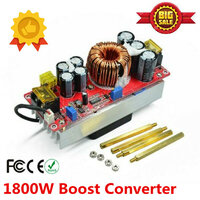Can I get say a bunch of 3V LED chips, put them in series of 4 per strip for 12v, then parallell multiple 12v strips, and run them directly off of a 12V battery bank?
Lets say I have an off-grid style 12v battery backup power supply that I can pull over 2000 Watts of 12V off of continuously 24/7 without it breaking a sweat..
Could I make some LED grow lights that I could drive straight off of that cheaply?
Lets say I have an off-grid style 12v battery backup power supply that I can pull over 2000 Watts of 12V off of continuously 24/7 without it breaking a sweat..
Could I make some LED grow lights that I could drive straight off of that cheaply?




